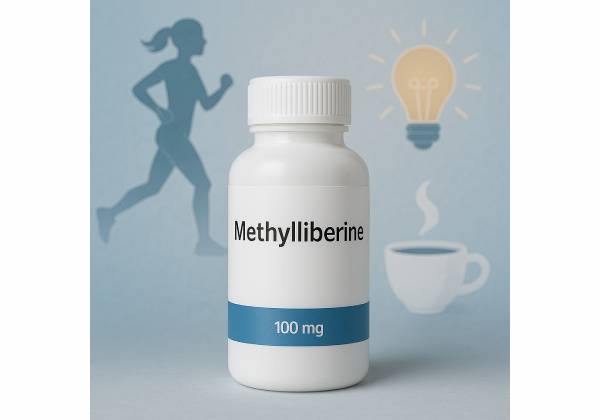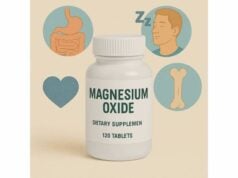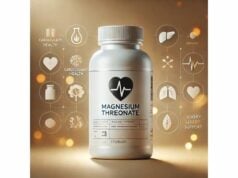
Methylliberine—often marketed as Dynamine—is a naturally occurring methylurate found in certain coffee species and kucha tea. It is structurally related to theacrine and caffeine, yet it behaves differently in the body. Users reach for methylliberine to feel more alert, motivated, and focused without the strong jitters or crash linked to higher-dose caffeine. Early human studies suggest small but meaningful effects on vigilance and subjective energy, plus an important interaction: methylliberine appears to prolong caffeine exposure by slowing its clearance in some contexts. At the same time, short-term trials in healthy adults report good tolerability at typical supplemental doses. This article translates the science into clear guidance: how methylliberine works, when it’s useful, how to dose it, how to pair (or not pair) it with caffeine and theacrine, what to expect in practice, and who should steer clear. You’ll also find the pitfalls that cause most side effects and a balanced assessment of the human evidence so far—so you can decide whether methylliberine fits your goals or if simple caffeine timing and sleep hygiene will serve you better.
Key Insights
- Promotes vigilance and subjectively higher energy in healthy adults; effects are modest and task dependent.
- Co-ingestion can extend caffeine’s half-life; plan total daily caffeine accordingly.
- Typical supplemental range is 50–150 mg per serving, with 100–200 mg/day common in products.
- Short-term studies show good tolerability; monitor blood pressure if combining with caffeine.
- Avoid if pregnant, breastfeeding, sensitive to stimulants, or you have uncontrolled hypertension or significant anxiety.
Table of Contents
- What it is and how it works
- Proven benefits and limitations
- How to use: dosing and timing
- Variables that change your response
- Mistakes, risks, and who should avoid
- What the evidence says today
What it is and how it works
What is methylliberine?
Methylliberine is a purine alkaloid known as a methylurate, a close chemical cousin of caffeine (a methylxanthine) and theacrine (another methylurate). It occurs naturally in the leaves of some Coffea species and in Camellia assamica var. kucha. In supplements, it is provided as a purified ingredient (often labeled “Dynamine”) in capsules or powders on its own, or blended with caffeine and theacrine.
How it works (simplified):
- Adenosine antagonism, indirectly: Caffeine’s classic stimulation comes from blocking adenosine receptors (A1, A2A). Methylliberine’s direct binding profile in humans is less well mapped than caffeine’s, but as a methylurate it influences adenosinergic signaling and downstream neurotransmitters implicated in alertness and mood.
- Kinetics that users notice: In human pharmacokinetic work, methylliberine shows linear kinetics across the tested ranges and, notably, can slow the clearance of caffeine, effectively extending caffeine exposure without necessarily increasing its immediate peak. Practically, that means the same morning coffee may “last longer” when methylliberine is onboard, which can be good for sustained focus but problematic for sleep if taken late.
- Synergy with other stimulants: Formulas frequently pair methylliberine with caffeine and sometimes theacrine. The combinations aim to balance fast-onset alertness (caffeine) with steadier, smoother subjective energy (methylurates). In controlled settings, blends have achieved similar vigilance performance to higher-dose caffeine alone, with differences in blood-pressure responses and self-reported jitteriness depending on the dose and setting.
- No magic metabolism boost: Marketing language sometimes implies a thermogenic or fat-burning effect. Current human data emphasize vigilance and affect (how you feel) more than metabolism or large performance changes. If weight management is the goal, caffeine strategy, sleep, movement, and diet quality move the needle far more than methylliberine.
How fast does it act and how long does it last?
Users typically feel something within 30–60 minutes, and the perceived duration of action usually falls around 2–4 hours, depending on dose, pairing with caffeine, and personal sensitivity. If combined with caffeine, the “tail” can extend longer because caffeine persists longer in the bloodstream. That can be helpful for long tasks, but it raises the risk of sleep disruption if taken in the afternoon or evening.
Forms and labeling to know:
- Capsules: common doses per capsule are 50–100 mg.
- Powders: often 100 mg per scoop in pre-workouts or nootropic blends.
- Stacks: frequent pairings are 100–150 mg methylliberine + 100–200 mg caffeine, with or without 50 mg theacrine.
Proven benefits and limitations
Where methylliberine helps most (so far):
- Vigilance and sustained alertness: In controlled trials, methylliberine-containing blends improved reaction time during vigilance tasks. These are repetitive attention-demanding tasks akin to long driving sessions, airfield watch, or esports scrims. Gains are usually modest and time-dependent, not transformative.
- Subjective energy, mood, and motivation: Acute dosing with ~100 mg has improved self-reported energy, concentration, and mood in healthy adults over several hours, without substantial shifts in vital signs in the dose ranges tested. For daily productivity, that translates to feeling more “on” and willing to engage, particularly when sleep is adequate and hydration is sound.
- Comparable performance with lower caffeine: A blend of caffeine + methylliberine (+/− theacrine) can match the vigilance benefits of double the caffeine in some settings. This is valuable for people who want performance without pushing caffeine into jitters or gastrointestinal discomfort.
What methylliberine does not do well:
- Cognition in every domain: Improved feelings of focus do not guarantee better scores on all cognitive tests. Across studies, effects on tasks such as set-shifting or working memory are inconsistent and often null. Use it to feel more ready, not to expect across-the-board IQ-like changes.
- Big ergogenic effects by itself: For strength, sprint times, or endurance, the evidence base is limited and favors caffeine as the primary driver. Methylliberine may contribute to perceived energy and task engagement, especially in long, monotonous efforts, but it isn’t a stand-alone sports enhancer.
- Metabolic health or fat loss: There is no solid human evidence that methylliberine meaningfully accelerates fat loss or alters resting metabolic rate beyond what routine caffeine does.
The caffeine interaction—benefit and liability:
Because methylliberine can extend caffeine exposure, some people obtain more sustained alertness from the same caffeine dose. Others experience lingering stimulation into the evening or higher blood pressure under stress. The solution is simple: if you use the combo, lower your total caffeine and dose earlier.
Realistic expectations in daily life:
- If you’re sensitive to coffee crashes but still want a lift, 50–100 mg methylliberine with a moderate caffeine dose can smooth the experience.
- If you’re already sleeping poorly or consuming caffeine late, methylliberine may worsen sleep latency by extending your stimulant window.
- Benefits are most noticeable when you’re well hydrated, fed, and not sleep deprived. No stimulant can compensate for chronic 5-hour nights.
How to use: dosing and timing
Evidence-aligned dosage ranges (adults):
- Single serving: 50–150 mg methylliberine.
- Daily total: 100–200 mg/day is common in blends; some products provide up to ~300 mg/day split doses, though most users do not need that much.
- With caffeine: If pairing with 100–200 mg caffeine, start low and test response for a week. Because methylliberine may prolong caffeine, a blend with ~100 mg methylliberine + 100–150 mg caffeine often feels like a higher caffeine dose without the same abrupt comedown.
Timing strategies you can follow today:
- Anchor to your hardest focus block. Take methylliberine 30–45 minutes before a sustained task (study, coding, long drive, tactical watch, tournament warm-up).
- Finish early. Keep your last dose before 2 p.m. (or 8–10 hours before bedtime if you are sensitive). Extending caffeine exposure late in the day is a common cause of sleep loss.
- Hydration check. Drink 250–500 mL of water with your dose. Dehydration amplifies perceived jitteriness.
- Food pairing. If you experience mild nausea on an empty stomach, take it with a small meal or snack.
Combination examples (practical starting points):
- Productivity (desk work): 100 mg methylliberine + 100 mg caffeine shortly after breakfast; optional 50 mg theacrine if included in your formula.
- Long vigilance task: 100–150 mg methylliberine + 100–150 mg caffeine 45 minutes prior; avoid redosing late.
- Caffeine-sensitive user: 50–100 mg methylliberine + 50–100 mg caffeine can deliver a subtle lift. Adjust caffeine first.
Cycle length and frequency:
There is no formal cycling protocol. Short-term studies (days to a few weeks) show good tolerability. To minimize habituation and protect sleep, use methylliberine only on days you need it or limit to 3–5 days/week, building in stimulant-free days.
Monitoring plan (simple and effective):
- Before you start: note your resting BP/HR, average sleep onset time, and total caffeine/day.
- Week 1: track sleep latency, midday focus, evening restlessness, heart rate on stairs, and any GI effects.
- If sleep worsens: move the dose earlier or reduce total caffeine by 25–50%.
- If BP runs high: reevaluate combinations; switch to lower caffeine or discontinue the stack.
Variables that change your response
1) Your caffeine baseline
People consuming ≥300 mg caffeine/day may feel less from methylliberine or just extend an already long stimulant tail. If you habitually drink several coffees, consider replacing part of that caffeine with methylliberine rather than adding to it.
2) Genetics and liver enzymes
Caffeine is metabolized mainly by CYP1A2. Methylliberine’s ability to slow caffeine clearance means slow metabolizers are more likely to notice prolonged stimulation and sleep disruption. Smokers (faster caffeine clearance) and those on interacting medications may notice different effects. If you suspect you are a slow metabolizer (coffee keeps you wired late), be conservative with combination dosing.
3) Co-ingredients in your stack
- Theacrine: Often 50–100 mg with methylliberine and caffeine. It can contribute to sustained energy; some blends aim for similar vigilance performance at lower total caffeine, which can help with jitter control.
- L-theanine: At 100–200 mg, theanine may reduce perceived edginess with caffeine. Evidence with methylliberine specifically is limited, but many users like the combo.
- Yohimbine and high-dose synephrine: These amplify cardiovascular stimulation and anxiety risk; avoid stacking with methylliberine-caffeine unless you are under qualified supervision and have screened for contraindications.
4) Sleep, light, and hydration
Methylliberine feels most useful when sleep is adequate and morning light exposure is consistent. If your sleep is irregular or you take methylliberine after lunch, the net effect can be neutral or negative despite the initial lift. Drink water with your dose; mild dehydration raises heart rate and amplifies “wired” sensations.
5) Training status and task type
Stimuli that improve vigilance do not automatically improve precision skills or strength. In esports and tactical tasks, blends have matched higher caffeine for vigilance without worsening subjective jitter at appropriate doses. In strength sessions, caffeine remains the main ergogenic driver; add methylliberine only if it helps you focus without elevating blood pressure.
6) Health conditions and medications
Hypertension, arrhythmia, panic disorder, GERD, and certain medications (including some antidepressants, antibiotics, and antipsychotics) can interact with stimulants. If in doubt, clear stimulant stacks with your clinician, especially if you also use nicotine, decongestants, or pre-workouts with multiple stimulants.
Mistakes, risks, and who should avoid
Frequent mistakes
- Adding, not replacing, caffeine. Because methylliberine can extend caffeine exposure, stacking it on top of your usual intake often overshoots. Lower caffeine by 25–50% when you first add methylliberine.
- Afternoon dosing. The most common complaint is trouble falling asleep. Dose before 2 p.m. (earlier if you are sensitive).
- Ignoring hydration and food. Lightheadedness or mild nausea are more likely fasted and dehydrated; a small snack and water prevent many issues.
- Chasing fat loss. Methylliberine is not a fat burner. If body composition is your priority, manage calories, protein, resistance training, steps, and sleep first.
- Stacking with too many stimulants. Yohimbine, high-dose caffeine, synephrine, or nicotine plus methylliberine is a recipe for anxiety and elevated blood pressure.
Side effects to watch for (usually dose-related and transient)
- Restlessness, anxiety, or irritability—more likely with high caffeine or late dosing.
- Sleep delay if taken within 8–10 hours of bedtime (sensitive users).
- Increases in blood pressure under stress or exercise; usually mild at common doses but monitor if you have hypertension.
- GI upset (nausea, loose stools) in a minority; food and slower sipping help.
- Headache in some users; often related to dehydration or caffeine overuse.
Who should avoid or seek medical guidance first
- Pregnancy or breastfeeding: data are insufficient—avoid.
- Uncontrolled hypertension, arrhythmia, or significant cardiovascular disease: avoid stimulant stacks; discuss alternatives with your clinician.
- Severe anxiety, panic disorder, or insomnia: stimulants can worsen symptoms; prioritize behavioral approaches.
- Children and adolescents: avoid routine stimulant supplementation.
- Known slow caffeine metabolizers with insomnia even from morning coffee: methylliberine may worsen sleep by extending caffeine’s tail.
When to stop immediately
- New or severe chest pain, palpitations, marked blood pressure rise, panic, or suicidal thoughts. Seek urgent care if symptoms are intense or persistent.
What the evidence says today
Safety:
A 4-week randomized trial in healthy young adults using 100–150 mg/day (alone or with theacrine) found no clinically significant changes in cardiovascular or clinical chemistry markers. Preclinical toxicology supports a favorable profile at much higher exposures than used in supplements, though animal data are not destiny. For most healthy adults, short-term use in the 50–150 mg/serving range appears well tolerated, especially when total caffeine is managed and dosing remains early in the day.
Efficacy:
- Affect and subjective energy: Acute ~100 mg doses improved concentration, motivation, and mood over several hours in healthy adults, without consistent changes on objective cognitive batteries.
- Vigilance and performance under load: In task-relevant settings (e.g., tactical vigilance), a blend of caffeine + methylliberine (+/− theacrine) produced vigilance improvements similar to double the caffeine alone. This supports the practical idea of doing more with less caffeine, which may reduce jitter in sensitive users.
- Caffeine interaction: Human pharmacokinetic work shows methylliberine can decrease caffeine clearance and increase its half-life, while caffeine does not meaningfully change methylliberine’s own kinetics across the tested ranges. Translation: if you combine them, reduce caffeine and dose earlier to protect sleep.
Open questions and prudent stance:
- Long-term daily use: Most human data cover hours to weeks, not months. Use methylliberine as needed, re-evaluate every few weeks, and prioritize sleep and light exposure.
- Individual variability: Genetics and lifestyle create large differences. Try one variable at a time and track sleep, mood, and heart-rate responses.
- Standalone versus blends: Current evidence is strongest for blends tailored to vigilance-heavy tasks. If you prefer minimalism, a well-timed small caffeine dose plus sleep and hydration strategies may deliver similar real-world benefits.
Bottom line:
Methylliberine is a useful tool for specific scenarios: extending alertness during sustained tasks, smoothing lower-to-moderate caffeine, and boosting subjective energy and motivation without a large BP penalty at thoughtful doses. It is not a cure for low sleep or a magic nootropic. Start low, dose early, manage total caffeine, and stop if sleep or anxiety worsens.
References
- Safety of Short-Term Supplementation with Methylliberine (Dynamine®) Alone and in Combination with TeaCrine® in Young Adults 2020 (Randomized Controlled Trial)
- Caffeine and Methylliberine: A Human Pharmacokinetic Interaction Study 2022 (Original Research)
- Effects of caffeine, methylliberine, and theacrine on vigilance, marksmanship, and hemodynamic responses in tactical personnel: a double-blind, randomized, placebo-controlled trial 2022 (Randomized Controlled Trial)
- Methylliberine Ingestion Improves Various Indices of Affect but Not Cognitive Function in Healthy Men and Women 2023 (Randomized Controlled Trial)
- A Toxicological Evaluation of Methylliberine (Dynamine®) 2019 (Toxicology)
Medical Disclaimer
This guide is educational and not a substitute for professional medical advice, diagnosis, or treatment. Stimulant supplements can interact with health conditions and medications. Do not use methylliberine if you are pregnant, breastfeeding, under 18, or have uncontrolled hypertension, heart rhythm problems, significant anxiety, or insomnia. If you experience chest pain, severe anxiety, sustained blood pressure elevation, or worsening sleep, stop use and seek medical care. Discuss any stimulant stack—including methylliberine, caffeine, and theacrine—with a qualified clinician who knows your history.
If this article helped you, please consider sharing it on Facebook, X (formerly Twitter), or any platform you prefer, and follow us for future evidence-based updates. Your support helps us keep producing clear, high-quality health content.










